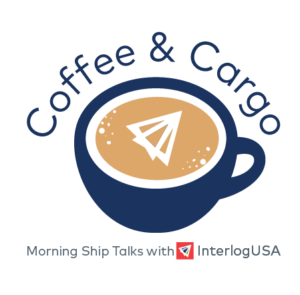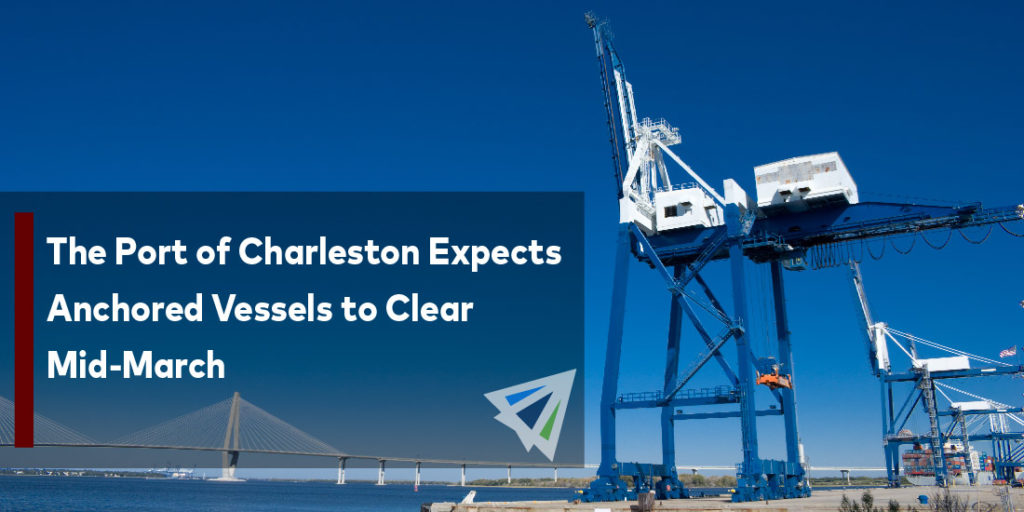Competitive Edge
February 23rd, 2022
Stay Current with Interlog’s Weekly Newsletter:
Sign up for our next Coffee & Cargo webinar –> CLICK HERE
To watch last week’s webinar –-> CLICK HERE
Ocean Freight Market Update
Headlines
- A report from Seatrade Maritime reveals the South China port of Yantian is aiming to achieve 16 million TEU container throughput by the year of 2025.
- Freight Waves reports that LA/LB ports see improvement as they clear containers (from 90,000 in Dec. 2021 to 64,000 in Jan. 2022)—sets records in January.
UPDATE: Notable U.S./Canada Port Congestion
- Houston: 55 Backlogged Vessels
- Charleston: 37 Backlogged Vessels
- Norfolk/Newport News: 40 Backlogged Vessels
- Los Angeles/Long Beach: 48 Backlogged Vessels
- Vancouver: 65 Backlogged Vessels
- New York/Newark: 29 Backlogged Vessels
- Note: This does not include bound vessels waiting at ports of origin
IMPORT: Asia to North America (TPEB)
Recent Developments:
- Congestion and trucking capacity shortages remain critical with no expectation to ease
- Retailers are trying to restore depleted inventories prior to what is traditionally peak season at the end of the summer
- Projections for a return to pre-Covid normalcy remains uncertain for TPEB lanes, per industry experts
- Potential disruptions on TPEB may result from union (ILWU) contracts expiring this June
Rates: Rate levels remain elevated. Shippers with urgent cargo or those looking to restore empty inventories are paying premium rates to secure space.
Space: Space remains critical.
Capacity/Equipment: Capacity remains severely under. Equipment deficits critical.
TIPS: Book at least 4 weeks prior to CRD. Strongly consider premium service and carrier IPIs through the PSW gateway. Be flexible as it comes to equipment and routing.
IMPORT: Europe to North America (TAWB)
Recent Developments:
- Schedule reliability in 2021 was half below the average performance over the past eight years
- USEC port congestion is worsening as carriers currently report long vessel wait times in Charleston and Miami ports
- New York port currently has manageable congestion. Much of it consists of outbound vessels on the export-side.
- USWC ports, notably Long Beach/Los Angeles, remain heavily congested
- Yard congestion at LB/LA has slightly improved
Rates: Rates levels to remain notably high. Further increases are expected into March.
Space: Space remains critical, especially for the USWC.
Capacity/Equipment: Capacity remains tight for both North Europe and Mediterranean services. Equipment availability at ports, however shortages remain at inland terminals.
TIPS: Book 6 or more weeks prior to CRD. Strongly consider premium service for higher reliability and no-roll guarantees.
EXPORT: North America to Asia
Recent Developments:
- Diminishing schedule integrity is contributing to void sailings, delays, vessel cut-offs at ports, and challenging post earliest return dates
- Vessel arrivals remain fluid for USWC POLs
- For the USEC, Savannah operations have seen improvements, but New York has seen increasing delays
- Rail availability for USWC has become limited with carriers firmly adhering to allocations
Rates: GRI advisories are out for transshipment ports and Oceania destinations for mid-February.
Capacity: Available capacity remains fluid for USWC POLs. USEC capacity has become for readily available.
Equipment: IPI origins remain adversely affected by deficits on containers and chassis. Standard equipment availability has not been an issue, but special equipment is remains elusive.
TIPS: Book 4 to 6 weeks prior to CRD to secure equipment and vessel space.
AIR FRIEGHT: United States
- Demand to Asia, Europe, and Latin America generally remains stable
- Demand has risen for European hubs Frankfurt (FRA) and Amsterdam (AMS)
- Airlines are back on schedule along with manageable capacity
- Larger shipments from major outbound gateways can take 2 to 3 days from booking to uplift.
- LAX/ORD/JFK terminals have reduced the backlog of inbound cargo rendering a positive effect on the export side.
- Rates to Latin America, Europe, and Asia have not seen considerable changes, but fuel costs are slightly higher.
TIPS: Book early considering the current dwell time at airports.
Tip Of The Week: Be Prepared For The Unexpected
Big freight forwarders have been the target of cyber-attack issues as of late.
It may be of benefit to you to explore and know your options, and have a back up plan in place in case unforeseen situations like this impact you.
Freight News
New terminal at Busan expected to help ease congestion, boost transshipment
Busan has not opened a new terminal in 10 years, but this April that will change. Busan will be opening the first berth of a new HMM-backed semi-automated container terminal, which will help ease the congestion and cut back on missed calls at the South Korean Port, the Journal of Commerce (JOC) reports. This new terminal is being developed by Busan Container Terminal (BTC), as part of an expansion of container port facilities taken on by Busan Port Authority (BPA. This will help ease congestions and cut back on missed calls at the South Korean Port.
Some things to know about this new terminal is it has the ability to handle vessels up to 23,000 twenty-foot equivalent units (TEUS), will have 11 quay cranes and 44 automated rail-mounted gantry cranes, according to the JOC. They are still in the final phase of transfer planning, so it is still unclear what carriers will use the terminal and which services will switch from the existing terminals in Busan. The Port expects the first berth to handle about 840,000 TEU per year, increasing to 2.5-3 million TEU a year, when additional berths open on June 17th, reported the Journal of Commerce.
Busan has struggled for many months with congestion, causing scheduling delays. While carriers have dealt with blanked sailings (otherwise known as a void sailing) on regional feeder services – when a liner operator provides carriage of goods by sea from major ports. With this new terminal, the hope is for congestion to be improved because the new terminal will have the capabilities to handle extra container cargo.
Air Canada saw lots of success in 2021
Revenue is flying high for Air Canada as they recorded a record $1.2 billion U.S. dollars ($1.5 billion in Canadian dollars) for 2021, as reported by Freightwaves. Of that total revenue, 23% was reportedly due to cargo, and they expect this strong performance to continue into 2022.
In 2020, when the pandemic greatly impacted passenger traffic, Air Canada took advantage of that and dedicated those available spaces to cargo flights. In 2020 they operated 4,235 passenger freights and in 2021 it went up to 10,217 reported Freightwaves. In terms of revenue for cargo-only flights, in 2020 it was reported that Air Canada made $239 million, compared to $661 million in 2021.
At the end of 2021 in December, Air Canada announced the introduction of their first B767 dedicated freighter to its fleet, with the expectation to add three more B767 freighters in service reported Air Cargo News.
In addition to Air Canada seeing all this success in 2021, air travel in 2022 will continue to improve and recover, as COVID-related border policies in Canada are easing up, starting February 28th – Canadians will no longer be advised to avoid travel for non-essential purposes and international passenger flights be allow to land at all designated airports, Freightwaves reported.
Watch Last Week's Webinar Now:

Topics discussed were what rates and space looked like after Chinese New Year, contract rates and what Interlog is doing, an overview and update on U.S. ports, current events, and a Q&A session with our experts!
Sign up for our
industry answers
Our team works to provide valuable, unique, and relevant content to assist you in finding solutions. Sign up now.
